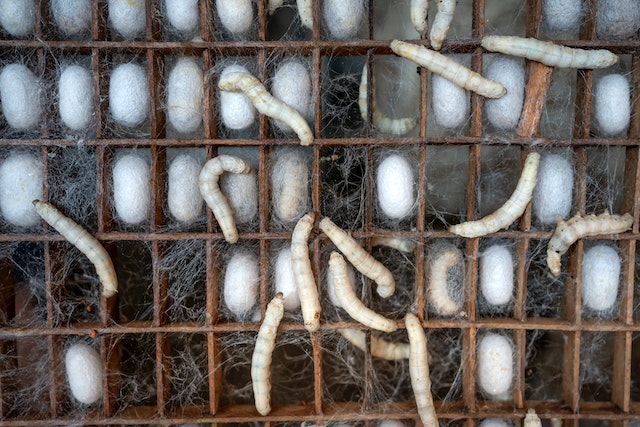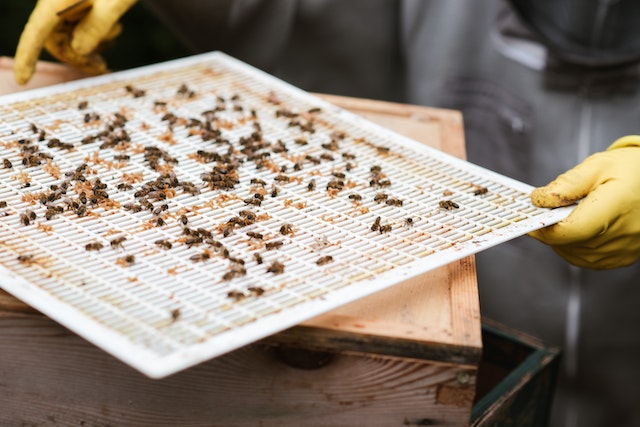In India and around the world, the insect farming industry is profitable. Various varieties of insects are bred, raised, and harvested for nutrition and other purposes.
Insect farming has roots in antiquity when the Greeks and Romans raised beetle larvae on a diet of wine and flour to produce a delicacy loved by the nobility of the period.
A bug-based farm can be started with little investment and, with proper management, can become a reliable source of extra revenue.
What are the requirements for becoming a successful insect farmer, and why would you think about allowing more insects into your house? Let’s examine the facts below in more detail.
What Is Insect Farming?
The intentional rearing of insects for the greater good is called insect farming. This may refer to nourishment for people or animals or even the manufacture of textiles.
The market for farm-raised flies has skyrocketed over the past two years, in part due to the rise in demand for bug-eating snakes as pets and the growing acceptance of including edible insects in your diet.
Bugs are more than just a trendy meal. Instead, they serve as a sobering reminder that, in order to feed our expanding population, global food output must rise by more than 50% by 2050.
What Insects Are Raised The Most Frequently?
Insect farming, often known as microstock, is the activity of growing and keeping insects as livestock. Insects may be raised for the products they generate, such as silk, honey, lac, or insect tea, or for use as food, feed, dye, or other purposes.
5 Insects Species To Raise For Profit:
Crickets:
The preferred type of insect husbandry for both pet shops and human food is crickets. The majority of caged reptiles consume crickets on a daily basis, so a domestic supply may be in the growing market.
Despite the fact that this insect is famously challenging to breed for novices, you may learn the tricks of the trade by consulting materials like cricket insect farming and creating a cricket breeding site where the magic can happen.
Cockroaches:
Cockroaches also referred to as “woodies,” are a straightforward treat for any mammal that eats insects and is already a hardy species. Your roaches should thrive if you can maintain a continuously humid, dark habitat for them, and they’ll produce a steady supply of offspring for you to utilize or sell.
Mealworms:
Three plastic containers are all you actually need to get started, and clear instructions are supplied.
To promote optimum growth, consider using wheat bran as food and housing in the bottom of their containers. You’ll need at least 60 mealworm larvae to get started, after which you can increase and maintain the initial population.
Red Wigglers:
You may use domestic red wigglers and the deposits they make whether you fish, garden, or keep chickens in your backyard.
Setting up a worm bin is simpler than you may think, and in just a few weeks, your food scraps will be transformed into young worms and castings that are rich in nutrients (worm poop).
You may feed any leftover worms to your chickens or add them to your outside compost pile to hasten the decomposition process. This top-notch compost is ideal for producing veggies.
Silkworms:
This insect livestock activity is best suited for individuals who already have developed trees because you’ll need a stable source of mulberry leaves to maintain the health of this picky species. Don’t dismiss this concern; it takes 20 to 30 pounds of new leaves to feed 100 worms for a month.

Lady Bugs:
Growing this famous red garden plant is just as enjoyable as throwing it outside. This species can be kept content with just a simple artificial habit, but if you want them to be healthy for more than a few weeks, you’ll need to provide them with a steady supply of food.
You’ll need a clear baggie with good airflow and moist filter paper to maintain the humidity. Sticks and leaves can be used by insects to deposit their eggs, and a cotton ball dipped in honey water can serve as a temporary food supply for beetles while you return them to the aphids.
Beekeeping:
Bee farming or apiculture is the process of keeping honey bee colonies in beehives. To produce honey for sale, apiaries or bee farms are constructed. Beekeeping is a low-cost and well-liked agricultural activity.
Benefits Of Insects Reared At Home:
Why, in the first place, would you want to breed insects as livestock? They actually have a tonne of benefits in the manner listed below. See the uses of insect farming in India.
For Yourself:
You might be surprised at how healthy insects are if you can get past your aversion to eating them. Crickets have a higher protein content per bite than beef and chicken, and the type of fat they have helps raise good cholesterol.
For The Environment:
Producing mealworms requires an acre of land, whereas producing the same amount of cattle protein requires up to 10 acres. As a result, the amount of space needed and the emissions of greenhouse gases are cut in half. In addition, insects are more effective at turning food into body composition than conventional livestock, using less water in the process.
If you have a household flock of birds, growing mealworms is the ideal way to feed your poultry with nutrition and reduce food waste. You can feed your chickens a quick snack, like mealworms or crickets, especially when they’re going through a molt.
Also, don’t disregard indoor birds. The majority of parrot species, including cockatiels and cockatoos, also like an occasional bug snack.
For The Benefit Of Your Chickens:
Upwards of 20% of all food produced in the United States is wasted, with the majority of it ending up in landfills. Flies enjoy nothing more than devouring your leftover food than anything else. Furthermore, using a black soldier fly setup, you can put them to work as organic composters.
You can create a method where you provide insects with leftover food so that they drop their eggs in the landfill, which then produces a supply of maggots for grazing your yard hens.
For Feeding Reptiles:
If your reptile is the joy of your life, cooking his home-cooked meals will guarantee he receives high-quality (and reasonably priced) food. Even though live crickets aren’t particularly expensive at pet stores, raising your own will significantly reduce your feeding expenses. Offer them to your pet shop if your production begins to grow beyond control.
For Fishing Bait:
For fishing bait, use home-raised crickets or worms instead of spending too much money on an expensive package of earthworms on your next trip. Before your trip, simply freeze a bag of crickets so that they are ready to use as bait.
For Your Garden:
Consider rearing ladybirds to distribute onto the plants in your garden. Making an effort to entice ladybirds, lacewings, and hoverflies to live on your plants will keep them healthy as they all like dining on aphids.
For Financial Gain:
Most homesteaders are searching for additional revenue-generating opportunities on their land, and growing insects can help you achieve exactly that. Starting costs are low, so you can start earning money within the first few months.
How To Make Money From Breeding Insects For Livestock?
There are some tips to assist you to get started even though growing insects as livestock is simpler than rearing other animal species.
Start Modestly:
Since insects are by nature little, there is no need to expand your business before you are ready. Learn the fundamentals, and you’ll gradually grow.
Watch Out For Disease:
Be cautious of disease because insects frequently attack other insects and improper infestation might ruin your business. Keep your business hidden (literally) and look out for aphids to prevent contamination from outside species.
Check The Demands Of Your Market:
You can select the kind that makes some sense for you by actually listening to the insect requirements in your location. For all, finding out that your neighborhood pet store is rejecting suppliers and that local gardeners are in desperate need of additional ladybirds is the last thing you want if you’re the owner of thousands of crickets.
Be Willing To Try New Things:
One benefit that insects have over other husbandry is their limited survival rates, which allows you to explore and improve your methods with each new generation. Over time, doing this will enable you to get better results.
Promote Locally:
If people are unaware that you sell bugs, they won’t think to buy them from you. Promote your business anywhere you can: on Facebook, at pet stores, on Craigslist, and in your neighborhood paper. Your stock will move more quickly the more you spread the message.
Conclusion:
Insect farming continues to be a young practice in the developed world. Therefore it makes sense that you might be hesitant to introduce insects to your farm. We sincerely hope that this essay at the very least helped you consider the possibilities. Although most of us do not regularly consume insects, this may soon be a reality. The advantages of farming insects over traditional livestock and crops are numerous. They are more space-efficient, reproduce more quickly, offer better nutrient utilization, and emit fewer greenhouse gases.
